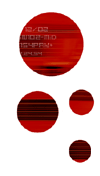

 |
 |
scientific program electroacoustic musics around set theory music analysis tools musicnetwork workshop professional week ircam forum workshops free software for music international multichannel sound forum performing arts and technologies dance and new technologies access to sound heritage thematic evenings demonstration stands artistic program set theory concert music in creation concert cursus concerts opera "one" sound installations open house weekend technologies gallery conferences demonstrations workshop-performances workshops and films ircam laboratories linux install-party concert distribution on internet associated events resonances night at glaz'art émilie simon at la cigale suguru goto reseaunances guided tours of ircam and the multimedia library resonances in pictures resonances 2002 
|
INSTRUMENTAL ACOUSTICSActivitiesThe attempt to understand the workings of musical instruments is the common thread of the research conducted by the Instrumental Acoustics Team. Even if not all instruments belong to our sound reference, their study - both theoretical and experimental - allows us to enrich our knowledge not only of the oscillation and sound radiation process, but also of the way in which the problematic of the interface between performer and instrument is systematically renewed. Thus, it is possible to answer the question : "why do we obtain a sound with this sonority when we blow into a flute in this way ?" The study of instrument quality is the logical extension of this work. Themes and associated projectsPhysical modelling of musical instruments Acoustic modelling of the workings of instruments, which is called physical modelling, is based on a classic approach, alternating theory, measurements, and simulations. Current projects concern piano hammers, the oboe's double reed, and the influence of the vocal conduit for wind instruments. Sound synthesis by physical modelling : Modalys software Modalys is a "virtual instrument workshop", which allows the creation of instruments by assembling elementary physical objects, and also allows programmable sound synthesis. As advances in physical modelling occur, it is expanded to incorporate new objects and interactions. We forsee expanding its possibilities to the modelling of three-dimensional objects through the use of digital finite element techniques. This software can also be used to synthesise non-musical sources, such as the sound of an automobile gear box (joint study conducted with the Sound Design Team). Instrument Making The object of this theme is to propose innovations in instrument-making which integrate the results of acoustic researches and new technologies (electronics, micro-mechanics, transduction and information processing). Areas of ExpertisePluridisciplinary research in acoustical physics. Acoustics, physical modelling, experimentation, synthesis, and instrument-making. Team Members
CollaborationsLaboratoire d'acoustique musicale (Université Paris VI), Laboratoire d'acoustique de l'université du Maine (Le Mans), Laboratoire Langues, Musique (Villejuif), Laboratoire de mécanique et d'acoustique (Marseille), LIMSI (Orsay), Hertfordshire University (UK), University of New South Wales (Sydney). |
|||||||||||||||||||||||||||||||
 |
Organization Committee Copyright Ircam-Centre Pompidou 2003 |